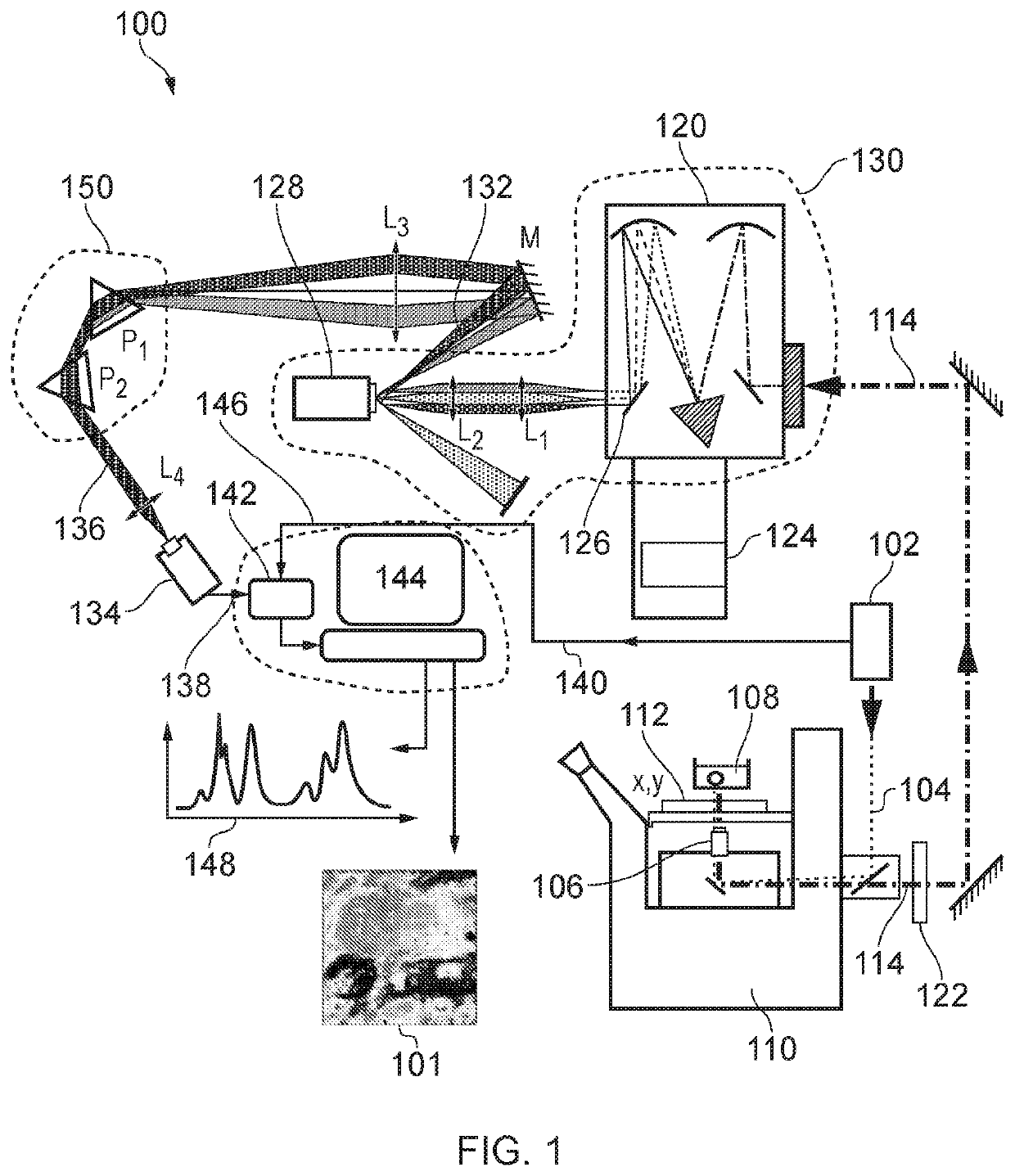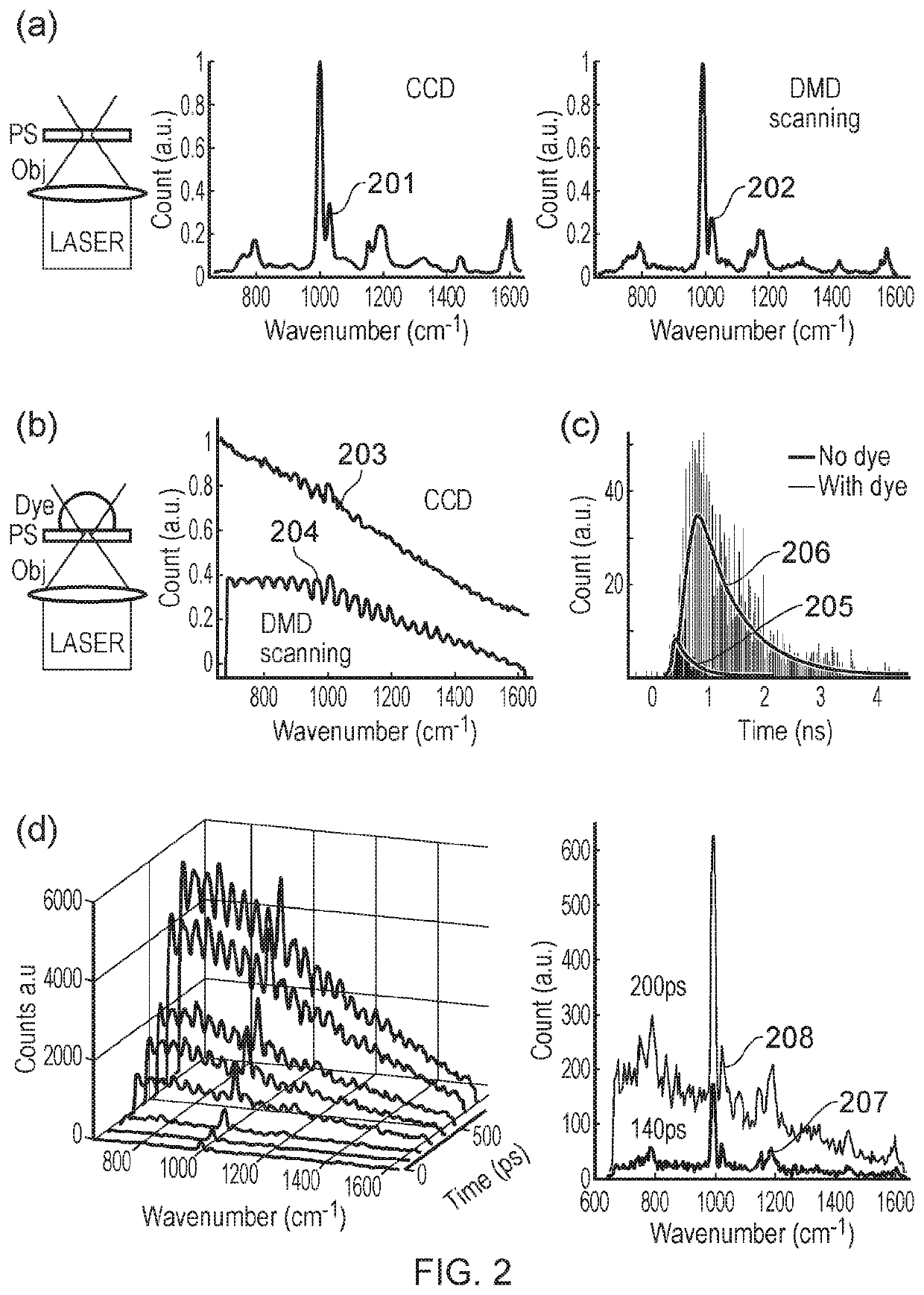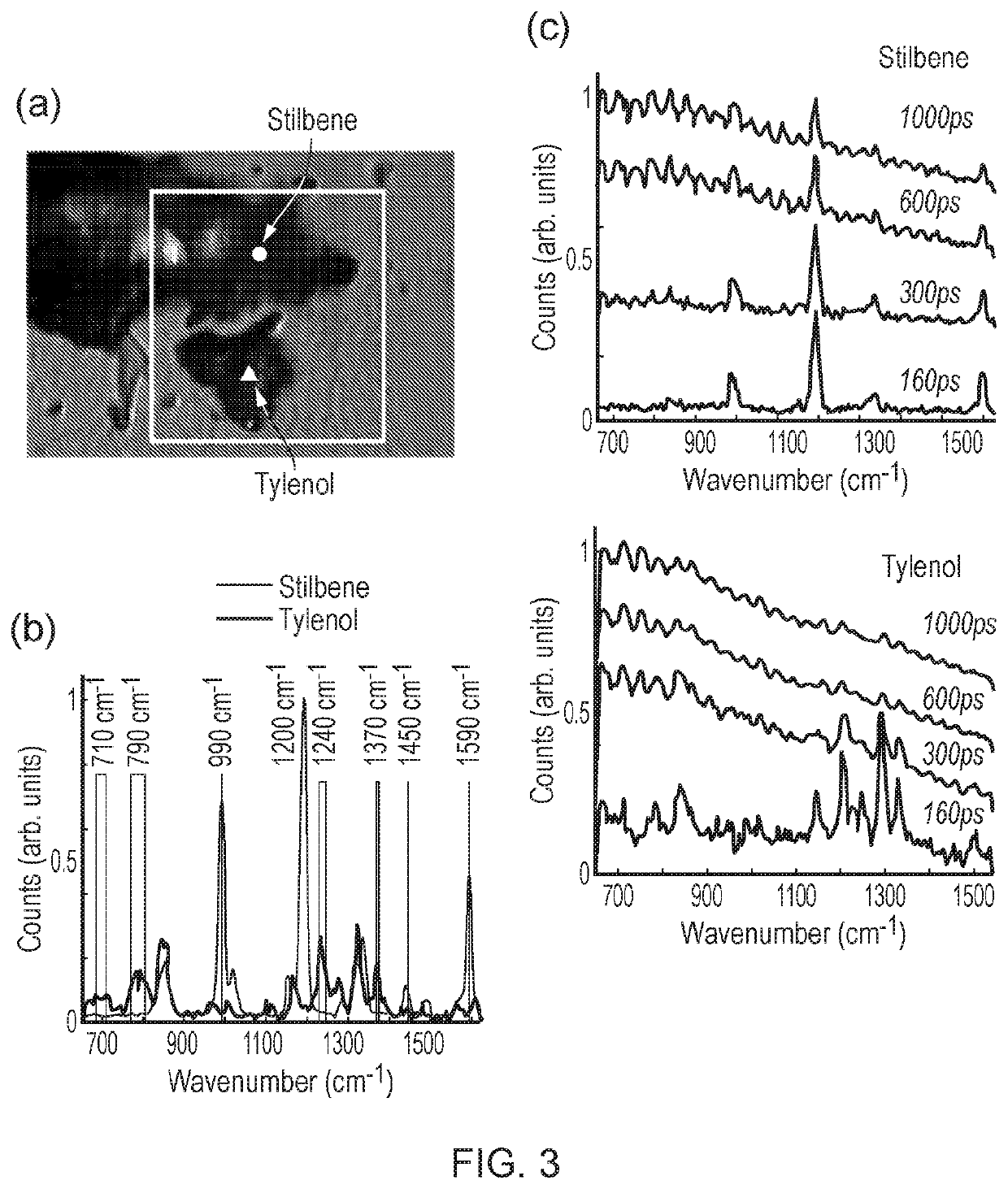Raman spectroscopy method and apparatus
- Summary
- Abstract
- Description
- Claims
- Application Information
AI Technical Summary
Benefits of technology
Problems solved by technology
Method used
Image
Examples
Embodiment Construction
[0042]Embodiments will now be described by way of example only, with reference to the accompanying drawings, in which:
[0043]FIG. 1 is a schematic illustration of an apparatus for acquiring data to produce a time-gated Raman spectral map in accordance with the present disclosure;
[0044]FIG. 2 shows a comparison between time-gated Raman spectra acquired with an apparatus according to the present disclosure and Raman spectra acquired with a conventional CCD without time gating;
[0045]FIG. 3 shows time-gated Raman spectra acquired with an apparatus according to the present disclosure;
[0046]FIG. 4 shows time-gated Raman spectral maps obtained from measurements made with an apparatus according to the present disclosure;
[0047]FIG. 5 shows a time-gated Raman spectral map of a sample comprising two material species obtained from measurements made with an apparatus according to the present disclosure;
[0048]FIG. 6 is a flow chart corresponding to a method according to the present disclosure;
[004...
PUM
 Login to View More
Login to View More Abstract
Description
Claims
Application Information
 Login to View More
Login to View More - R&D
- Intellectual Property
- Life Sciences
- Materials
- Tech Scout
- Unparalleled Data Quality
- Higher Quality Content
- 60% Fewer Hallucinations
Browse by: Latest US Patents, China's latest patents, Technical Efficacy Thesaurus, Application Domain, Technology Topic, Popular Technical Reports.
© 2025 PatSnap. All rights reserved.Legal|Privacy policy|Modern Slavery Act Transparency Statement|Sitemap|About US| Contact US: help@patsnap.com



